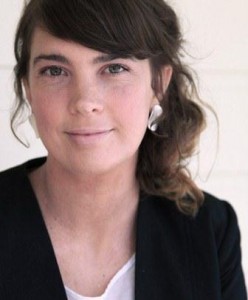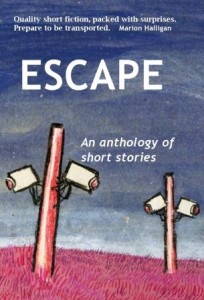 1. Who are the short fiction authors you admire (Australian or otherwise, alive or dead)?
1. Who are the short fiction authors you admire (Australian or otherwise, alive or dead)?
Miranda July, ZZ Packer, Alice Munro and Josephine Rowe.
2. What is the most memorable short story you have read? And why does it stand out for you?
I read Helen Garner’s collection of short stories ‘My Hard Heart’ about ten years ago and I realised what it meant to be a woman and a writer and daughter. Recently I read her piece ‘While Not Writing a Book: Diaries’ in the Monthly and had a similar feeling of clarity and elation.
3. What do you like about the short story form?
I like precision and truth and tidiness and cleverness. In short stories these things matter.
4. How would you describe your own writing?
Sporadic. Gratifying. Containing liberal amounts of yearning/animal references.
5. Which of your stories are you most fond of right at this moment and why?
Fluffy Animals – because I actually used a good, smart mentor to help edit the story and it paid off.
6. Where do the ideas for your stories come from? (Take us through an example)
Walking, I’m always walking when a little spark of a thought reaches out and joins another little spark and then if I keep tumbling the two sparks together they become words, and then a story. With Fluffy Animals I realised that a number of my recent experiences revolved around yearning for a companion – whether that be animal or human, and I was also thinking about how in the transition from child to adult you merely swap toy animals and babies for the real thing. Most of my ideas do come from my own life; I’m compulsively grouping related things together when I write a story. These little things are related to each other and these other things belong here instead. It’s a literary compulsion.
7. What is your writing process – from idea to publication? (Do you go it alone or are others involved?)
Every piece of writing is different, but usually I’m slow and wait for an idea to hit me over the head before I commit to it. Deadlines and competitions work well as a motivating force. Sometimes too, I’ll illustrate the story – like a cartoon, or draw pictograms or a graph if I’m not quite sure what’s most important or how to express something elusive. Usually I need a good first sentence before I can move on to write the rest; sometimes everything hinges on that first sentence. I feel it has to adequately summarise the whole mood of the piece. Once the story is semi-coherent I’m happy for a handful of respected readers and writers to read my work and I appreciate when they write comments and make little ticks on it using an HB pencil.
8. Do you feel the short story form is valued in Australia? What makes you say this?
I think it is undervalued by most but a devoted few. And those devoted few are really very devoted. I would love to see more short fiction in mainstream magazines and even weekend newspaper supplements. But the people who seek it out and make room in their budgets and bookshelves are reason enough for me to keep writing.
9. How do you feel about your work being published in non-print forms such as digital and audio?
Great! I love the interwebs and the radio, and think all stories should be read aloud to someone you love for maximum enjoyment.
10. What advice would you like to offer Spineless Wonders?
Keep your short fiction collection in a custom made bookshelf by the toilet; it’s a fact that good stories ease bad bowels!
